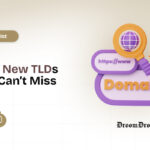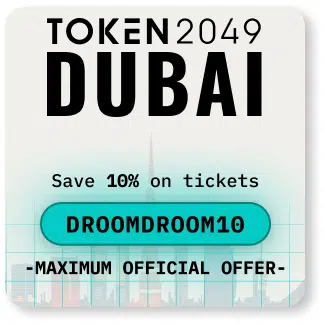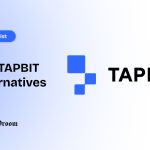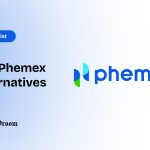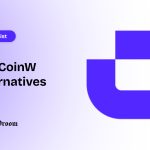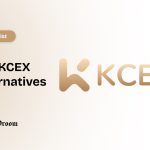Every top-level domain (TLD) launch has a moment that never comes back. In the beginning, the best names are still available, prices are accessible, and one-word category killers can be claimed by anyone paying attention. Miss that window and you’re left bidding against the market or settling for long, forgettable names.
- History: What Early Meant in Past Cycles
- Present: the Mechanics of an Early-Stage TLD
- Why Early Matters Specifically with .web3
- The Opportunity Zones: What to Claim Early
- A Simple Decision Model (for Founders & Investors)
- For Projects, Chains, Exchanges, and Wallets
- For Domain Investors & Brokers
- Risks to Keep in View
- Conclusion
This playbook is as old as the internet. It powered the .com boom, fueled bidding wars around category keywords, and more recently sparked a new wave of demand around blockchain-native domains. With the arrival of .web3, we’re at the front edge of another window where digital identity is being redefined and the most valuable names are still up for grabs.
This guide breaks down the why and how of early adoption so founders, investors, creators, and communities can move with conviction.
Looking for the Top 10 Crypto Domain Name Providers for All Blockchains? Click here to learn more.
History: What Early Meant in Past Cycles
In the late 90s and 2000s, early .com adopters secured the internet’s most valuable real estate:
- Business.com ($7.5M sale in 1999): At the peak of the dot-com boom, this became the symbol of authority in commerce online.
- Fund.com ($9.99M, 2008): A finance keyword that showed how clarity and trust could carry massive price tags.
- We.com ($8M, 2015): A short, brandable two-letter domain proving that memorability is a universal asset.
- Slots.com ($5.5M, 2010): A niche but powerful keyword that locked up dominance in online gaming.
The lesson wasn’t subtle: the earliest moment is when the market underprices cultural keywords, not after everyone realizes they’re scarce.
When blockchain naming arrived, the pattern rhymed. Amazon.eth was reportedly offered millions during the 2021 rush though it never officially sold, the fact that such bids were rumored shows how seriously mainstream players were watching blockchain naming.
The ENS “999 Club,” where collectors drove three-digit names into six-figure sales, became a textbook case
, and clean, short names across Web3 naming systems began commanding premiums because they compressed identity, trust, and discoverability into a single word or three characters.
Takeaway: the market repeatedly rewards people who spot the right keyword at the right moment-before indexing catches up.
Wondering how to buy Crypto Domains? Here is an Easy Step by Step Guide for beginners.
Present: the Mechanics of an Early-Stage TLD
When a new TLD launches, three dynamics shape pricing and availability:
- Scarcity & hierarchy
There’s only one green.web3, ai.web3, or music.web3. Once claimed, these kinds of names move quickly from “cheap to mint” into expensive to buy back. Category leaders and ambitious upstarts will compete for them, either now at mint/claim or later on secondary markets. Early is simply cheaper and less competitive. - Network effects
Names accrue value as people use them: in profiles, wallets, signage, websites, and messaging. TLDs aligned with strong ecosystems (e.g., Polygon) can accelerate that flywheel by offering low fees and widely supported tooling. - Utility
Blockchain TLDs aren’t just addresses; they can double as human-readable payment handles, onchain websites, encrypted messaging identities, and verified profiles. That built-in utility compounds value over time.
Why Early Matters Specifically with .web3
.web3 stands out because the landrush is happening right now. The most valuable names – short, universal, and category-defining are still unclaimed. Once they’re taken, they’ll only reappear on secondary markets at multiples of today’s entry cost. Timing is the difference between paying mint price and paying a premium.
The Opportunity Zones: What to Claim Early
Think in layers:
- Category roots
Short, memorable nouns that define large markets: gaming.web3, climate.web3, social.web3 - Brandables
Easy, evocative names that sound like products: ember.web3, orbit.web3, forge.web3. These are the next-gen equivalents of classic .com brandables. - Community & culture
Names aligned with subcultures and memes travel fast in Web3: gm.web3, wagmi.web3, onchain.web3. Social proof is part of the asset. - Local & vertical niches
City + category (e.g., dubaiwallet.web3), or domain-specific niches (defense.web3, health.web3). These can be slept-on until an operator shows up hungry.
A Simple Decision Model (for Founders & Investors)
Use this lightweight filter before you register or bid:
- Memorability: Would someone remember it after hearing it once?
- Market depth: Is there an ecosystem big enough to support many buyers/users?
- Resale logic: If you never use it, can someone obviously use it better?
- Utility fit: Does the name make sense for payments, profiles, messaging, or websites in your context
- Legal sanity: Avoid trademarks and obvious conflicts. Future buyers care about clean provenance.
If a name is memorable, category-defining, and legally clean-and it maps to real utility-being early is almost always the alpha.
For Projects, Chains, Exchanges, and Wallets
- Own your category before your competitor does. A single premium name can anchor your docs, brand, and community.
- Unify identity across apps, agents, and profiles (one name, many surfaces)
- Signal values. Using .web3 communicates alignment with open, on-chain, user-owned principles-useful for recruiting, partnerships, and community trust
For Domain Investors & Brokers
- Portfolio barbell. Mix a few premium category names with a basket of high-quality brandables.
- Time horizons. Assume the best names compound value over years, not weeks.
- Distribution matters. Market your inventory where Web3 lives (X, Farcaster, Discord, Telegram) and where institutions watch (LinkedIn, conferences).
- Know the comps. Historical domain deals (from .com to ENS) show the upside when culture and timing align. NFTs.com at $15M (2022) proved how Web3-linked keywords carry value even in legacy DNS, while Crypto.com’s reported $12M+ deal showed how a single name can rebrand an entire company. These benchmarks illustrate how culture, timing, and simplicity combine into premium pricing.
Risks to Keep in View
- Cycles happen. Crypto markets are volatile; pace your capital deployment.
- Execution risk. A great name without a great product is just shelfware.
- Category drift. If terminology shifts, some names can age. Favor durable concepts (identity, payments, security) over fleeting buzzwords.
Conclusion
Early matters because scarcity, network effects, and utility compound fastest at the start. That was true for .com and it’s true now for blockchain naming.
With .web3, you’re not just buying a domain – you’re buying a head start. Early names become cultural landmarks, while latecomers pay premiums or miss out entirely. History shows the same pattern across every cycle: the best time to act is at the beginning.
If a name is simple, memorable, and useful and you can grab it now you’re already late if you wait.




